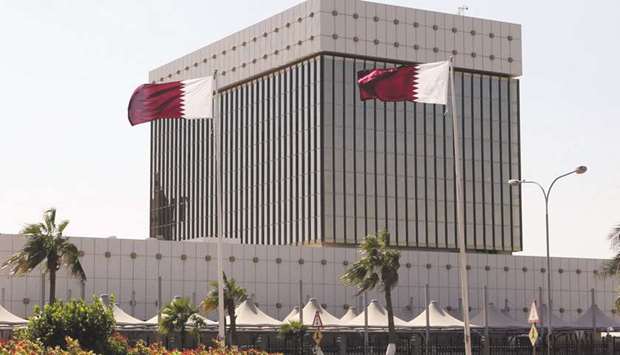The Qatari riyal's peg to the dollar is expected to hold firm as the country’s central bank has large foreign exchange (FX) reserves to support the currency, researcher Euler Hermes has said in a report.
“Exchange rate peg should hold although inflation is set to rise,” Euler Hermes said.
Qatar's public finances are to “remain solid”, although after 16 years of continued large surpluses, persistent low oil and gas prices (since mid-2014) pushed the fiscal account into a deficit in 2016, estimated at -4.5% of GDP.
The deficit would have reduced to -2.5% in 2018, the report noted.
Public debt rose from 32% of GDP in 2014 to 48% in 2016 (around $75bn) and is forecast to increase to about 52% at end-2018.
However, Qatar will remain a large net external creditor thanks to the huge foreign-asset position in the Qatar Investment Authority (QIA).
Noting that Qatar’s debt service to export earnings ratio stands at a “moderate” level, Euler Hermes said the country’s repayment obligations are “unlikely to present liquidity problems.” Incurred by oil and gas investments since the 2000s, external debt is “relatively high.”
Qatar’s financial resources will remain strong, the report said and noted the combined forex reserves of the Qatar Central Bank (QCB) and the QIA represent well over 200% of annual GDP and cover more many months of imports.
Meanwhile, the QCB’s FX reserves topped $47.4bn in October, a 2% increase month-on-month, QNB said in a recent report. This, QNB said, equates to 8.5 months of import cover.
The country’s oil production rose to 609,000 bpd in October from 570,000 bpd in September, QNB said in its latest "Qatar Monthly Monitor."
Brent crude prices, however, dropped to average $65.9 for a barrel in November, it said.
QNB data showed Qatar’s trade balance surplus grew 129.1% year-on-year (y-o-y) and stood at $5.2bn in October.
The fiscal account surplus widened to 3.5% of GDP in the second quarter due to higher oil prices.
The current account surplus widened while net capital and financial flows were positive in Q2.
Qatar's public finances are to “remain solid”, although after 16 years of continued large surpluses, persistent low oil and gas prices (since mid-2014) pushed the fiscal account into a deficit in 2016, estimated at -4.5% of GDP.
The deficit would have reduced to -2.5% in 2018, the report noted.
Public debt rose from 32% of GDP in 2014 to 48% in 2016 (around $75bn) and is forecast to increase to about 52% at end-2018.
However, Qatar will remain a large net external creditor thanks to the huge foreign-asset position in the Qatar Investment Authority (QIA).
Noting that Qatar’s debt service to export earnings ratio stands at a “moderate” level, Euler Hermes said the country’s repayment obligations are “unlikely to present liquidity problems.” Incurred by oil and gas investments since the 2000s, external debt is “relatively high.”
Qatar’s financial resources will remain strong, the report said and noted the combined forex reserves of the Qatar Central Bank (QCB) and the QIA represent well over 200% of annual GDP and cover more many months of imports.
Meanwhile, the QCB’s FX reserves topped $47.4bn in October, a 2% increase month-on-month, QNB said in a recent report. This, QNB said, equates to 8.5 months of import cover.
The country’s oil production rose to 609,000 bpd in October from 570,000 bpd in September, QNB said in its latest "Qatar Monthly Monitor."
Brent crude prices, however, dropped to average $65.9 for a barrel in November, it said.
QNB data showed Qatar’s trade balance surplus grew 129.1% year-on-year (y-o-y) and stood at $5.2bn in October.
The fiscal account surplus widened to 3.5% of GDP in the second quarter due to higher oil prices.
The current account surplus widened while net capital and financial flows were positive in Q2.




